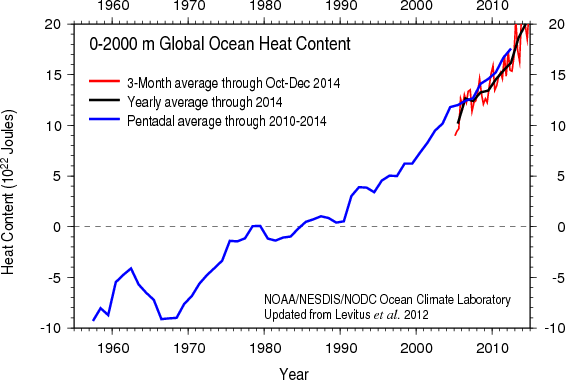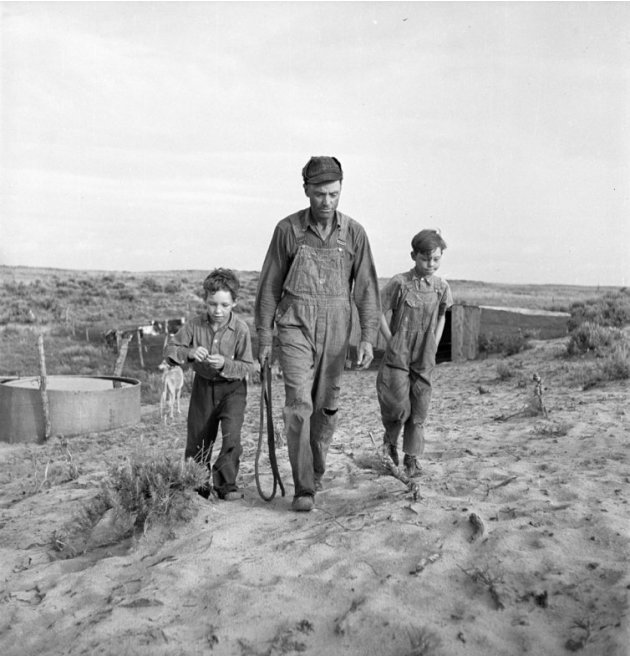 |
| via Wikipedia |
Would you like to
know what your world is going to look like by, say, 2030? A little
peek at the wonderful things we’ll be using? Lives we’ll be
living? Did vat-grown meat ever become a thing? Are more of us
vegetarian? How did that whole Trump presidency work out?
Getting a look is
easier than you think. All we have to do is look at Puerto Rico
today. Today Puerto Rico is a land of sunshine, environmental
devastation, and the threat of starvation.
This year has seen
three major global warming-intensified storms hit in the Caribbean
and southern US in a row. One, Irma, was rated a Category 5 only
because there is nothing higher than C5. This is pretty much exactly
in line with NASA, NOAA, and international modelling of the effects
of a warming planet. The ocean has been soaking up amazing amounts of
both carbon and heat over the last couple of decades. Now, when a
depression forms over the ocean, there is much more energy available
for it to soak up. And the more energy it gets from a warmer ocean,
the bigger the eventual storm.
On the West Coast of
North America, this will play out in two ways; the warming ocean will
also create larger storms, and the warmer air will pick up more
water. As little as 1/2 of one percent more moisture in the air can
lead to an increase of fifty millimetres or more (2”+) of rain.
With the logging of the last century, this will mean more mudslides,
silting of rivers, damage to spawning grounds, and impacts on
municipal water supplies.
On the US’ south
and East coasts, storms, particularly hurricanes, will be larger,
more damaging, and bring more flooding with larger storm surges. Maria, the hurricane that
has wiped our about 80% of Puerto Rico’s crops and up to 80% of
some neighbourhoods, is the third storm to hit US territory. This too
is in line with the models. And it is this sequentiality that is the
problem.
In Houston TX, some
places recieved over a metre of rain in 24 hours. As the centre of
the US petrochemical industry, Houston has claimed the lion’s share
of US aid. Florida recieved much of the rest. Puerto Rico, not being
a state but rather a protectorate, is coming a poor third. It doesn’t
hurt that both Texas and Florida voted heavily for the current
president.
This is one year.
What will it be like when we’ve had a decade or more of these
disasters. Drought and wildfire in the Midwest, or wildfire or floods
on California. In Canada, the prairies are overdue for a drought, a
wildfire almost took out Ft. McMurray last summer, and the interior
of BC has been devastated by one this summer. Insurance against
natural disasters is becoming harder to get, and insurance companies
are losing their collective minds.
So here’s the
thing about Puerto Rico: 80% of their food crops have been destroyed.
The protectorate is poor. And, as Amartya Sen has pointed out, in
order to survive famine, you have to be able to either buy food in
the market, or move to where you can buy or grow food. And the US has
been exploiting the fact that if you just provide food aid, you
destroy the local markets, making the population dependent on
provided food. It’s actually better to slowly substitute money for
food aid, in order to build the market back up.
So what are the odds
that the current US government will provide a guaranteed annual
income to the residents of Puerto Rico? Because it will take years
for PR to recover (if ever—there are more storms coming). Or Puerto
Rico becomes a state of refugees, moving en masse to the
continental United States. And how do you think that’s going to go
over in the present political environment in the US?
That’s your future
too. There will be a storm. Or another natural disaster. And the
country will be overextended, so disaster relief will be limited or
non-existant. So you either try and rebuild where you are, or become
an internal refugee.
Murphy’s Law
dictates that when the disaster hits, it will destroy the most
important stuff; transportation corridors, the electrical grid, food.
Just like Puerto Rico. And that it will happen at the worst time. The
1% think they can get out of this—it’s why Elon Musk wants to go
to Mars. It’s why they’re buying bunkers in New Zealand. And it
won’t help.
We cannot keep going
the way we are. That route means we’re reduced to a hundred
thousand humans, or so. Worst case, we turn the planet into Venus for
a couple of million years. As Michael Crichton said in Jurassic Park:
“I don’t fear for the future of life on Earth. [...] I fear for
the future of human life on Earth.” We have to downshift in a
radical way. Converting to sustainable power doesn’t mean we get to
keep this life of insane consumerism. Sustainable power means that we
live a medieval life in some comfort. If we start yesterday, we might
be able to keep the losses to a few billion humans.









.svg/800px-Instrumental_Temperature_Record_(NASA).svg.png)















